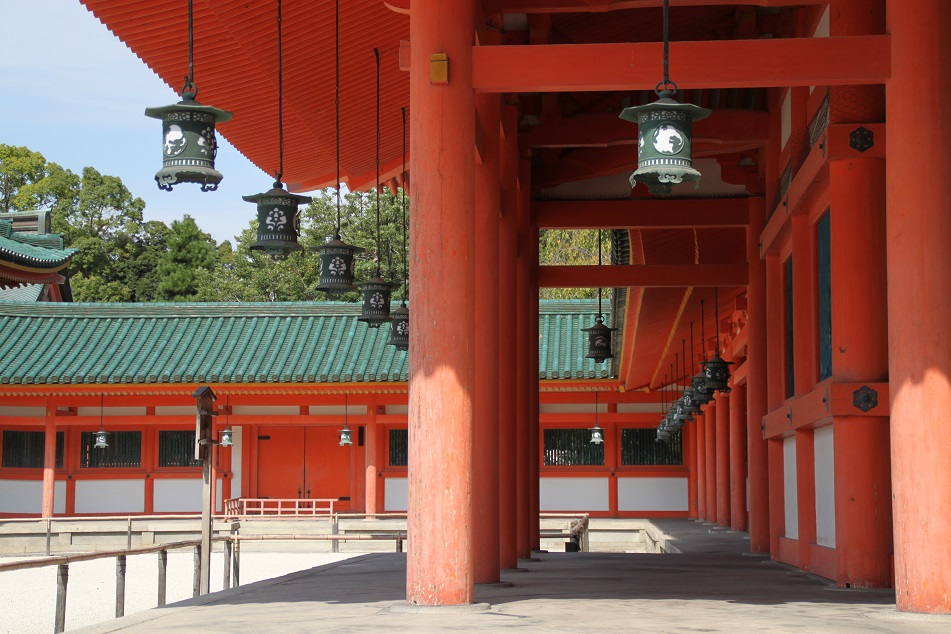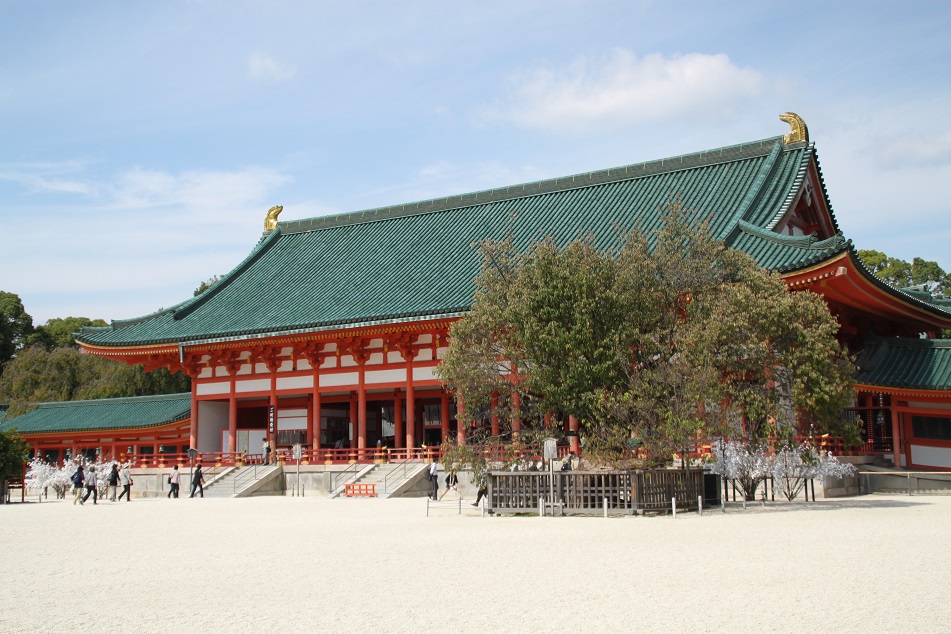Hosting the world’s fair has become a means some countries have embraced to promote their economic progress and development agenda to an international audience. Since the event’s first run in 1851, which celebrated advancements in industrial technology in the United Kingdom and other countries, a number of host cities have witnessed a change in their skylines thanks to the construction of monumental landmarks completed as the centerpiece of the exhibitions. Melbourne’s Royal Exhibition Building, Paris’s Eiffel Tower, and Brussels’ Atomium were all finished just in time for the world expo in each respective city.
Late 19th-century Japan, however, took a different approach. Amid the euphoria of reopening itself to the world after centuries of self-isolation imposed by the Tokugawa shogunate, Japan was experiencing rapid industrialization under the watchful eyes of Emperor Meiji, the architect of the country’s rise as a world power. Taking its inspiration from the fifth world’s fair in Vienna, in which Japan had participated, the country held its first National Industrial Exhibition four years later in 1877, positioning itself as a meeting place for Western technologies and their Japanese counterparts. Taking place in Tokyo, the new capital of Japan since 1868 – a year after Emperor Meiji ascended the throne – the subsequent exhibitions were held under different challenges; the second event occurred at a time of high inflation and recession, while the third failed to attract more visitors due to an influenza outbreak and a long spell of rainy weather.
The fourth exhibition was initially scheduled for 1894, four years after the third, and Kyoto was chosen to host the national event, partially to reinvigorate the city’s sluggish economy following the transfer of the Japanese capital to Tokyo. However, thanks to popular demand, the exhibition was pushed back by a year to coincide with the 1,100th anniversary of the establishment of Kyoto. Modeled after Heian Palace which was burned down in the 13th century, Heian Shrine was constructed as the main venue for the fourth exhibition. However, as the new location where the shrine would be built was smaller than the old palace’s grounds, the structures were constructed 40% smaller than the long-lost palace.
The event was a success, drawing tens of thousands of exhibitors and welcoming more than a million visitors. Streets and accommodation in the city were improved, the streetcar was introduced for the first time to Japan during the exhibition, and the main venue itself was later turned into a shrine dedicated to the spirits of the first and last emperors who ruled from Kyoto. Despite being smaller than the original palace, Heian Shrine is still a sight to behold, a fact that’s evident as soon as one passes through its impressive Oten-mon (main gate). Painted primarily in vermilion, an auspicious color in Shintoism, its main hall and corner towers sit beyond the shrine’s entrance fronting a courtyard filled with bright white sand and pebbles separating the structures.
Beyond the walled enclosure of the shrine lies a beautiful Japanese garden filled with trees, ponds, pavilions and a covered bridge that follows traditional Japanese design and aesthetics. While the shrine’s main compound showcases grand architecture from Japan’s past, the garden exudes peace and tranquility with the emphasis on harmony with nature. If there is one thing the world can learn from Kyoto, it’s that moving toward modernity doesn’t necessarily mean pushing aside the past, as the story of Heian Shrine shows. Traditions, as long as they’re relevant to the values of modern society, are after all what make this planet a colorful place.












Great post with an interesting perspective on the World Exhibition in Kyoto! Your photos were as usual superbly done, Bama!
LikeLiked by 1 person
Thanks Peter. Imagine if cities across the globe do what Kyoto did when they get the opportunity to host such large-scale event; we’ll probably see more modern structures built with traditional aesthetics and sensibility in mind.
LikeLiked by 1 person
Lovely photos Bama.
Alison
LikeLiked by 1 person
Glad you enjoyed them, Alison!
LikeLiked by 1 person
Beautiful and so close to the markets, but I still missed it!
LikeLike
Maybe you didn’t have enough time? The next time you’re in Kyoto you might want to check that out, and don’t miss the gardens as you have to buy a separate ticket to visit it.
LikeLiked by 1 person
I had eight days in Kyoto, but guess there’s just so much to see in this amazing city
LikeLiked by 1 person
Very nice photos. I was there on an extremely rainy day , so my photos have a completely different feel. Now I know what it looks like in the sun!
LikeLiked by 1 person
Thanks! There were occasions in the past when I went to supposedly beautiful places at the wrong time, and sometimes I’m lucky enough to be able to return when the sky is clear and the weather is nice.
LikeLike
Reblogged this on clawingmywayin.
LikeLike
I love the comprehensive accounts of your travelogues entailing both past and present. It’s indeed a fascinating place to be in.
LikeLike
Always appreciate your kind words, Umashankar. I wasn’t aware of this place until my travel partner told me about it when we were in Kyoto — I’m glad he did!
LikeLike
Is Japan bulldozing the past like China, or are they trying to preserve it? I know much of it was destroyed after WWII so I’m not what there is to preserve.
LikeLike
Kyoto was spared from the bombings thanks to the US’ Secretary of War’s sentimental connection with the city. I wrote about it here: https://harindabama.com/2017/12/03/kyoto-a-prologue/
That’s why compared to other cities in Japan, and the fact that it was the country’s capital for more than 1,000 years, Kyoto has so many invaluable historical monuments.
LikeLike
A lovely post, Bama. I distinctly remember the large round stepping stones over the pond in the garden from my very first trip to Kyoto as a teenager, so it was a special experience to see them again. And it’s fascinating to think that Heian Shrine was brand-new back in 1895 – which makes the Eiffel Tower older by a couple of years! Can you imagine how much grander the buildings would have looked had they been constructed as a full-size replica of the imperial palace?
LikeLike
Thanks James. I’m glad you mentioned about this place because I was completely unaware of it prior to our trip. Visiting places which had been reconstructed at a smaller scale than the original structures always make me imagine how magnificent the latter must have been had they survived — Istano Basa Pagaruyung, for example.
LikeLiked by 1 person
I wish more new construction projects kept in mind your comment that “moving toward modernity doesn’t necessarily mean pushing aside the past.” There are so many ways to incorporate traditional design elements into new buildings and infrastructure, and in my experience, some Asian cities seem to do this better than most big metropolises. I’ve not been to Kyoto, but it seems like such a charming historical city. Can’t wait to see it someday.
LikeLike
Fortunately those few Asian cities have inspired others in the region and beyond to replicate their success in preserving traditional architecture or incorporating it in modern aesthetics. Wherever you plan to go in Japan, you really shouldn’t miss Kyoto, Lex. Yes, it has become a very popular city among tourists now, but that’s because of very good reasons. I went in the beginning of autumn, and I heard in the spring the city is beautiful too.
LikeLiked by 1 person
Great post Bama! I’ve witnessed firsthand in Montreal and Vancouver how a World’s Fair can leave architectural legacies. It’s impressive how Kyoto used a historic/traditional approach for their exhibition. At more than double the size, the original palace must have been quite the sight to behold. The structure and gardens are beautiful—lovely photos.
LikeLike
Thanks Caroline. When I was a kid there was one structure which I associated Montreal with: the Biosphere. The city did choose the right building to be a modern icon of Montreal — at least it worked for me. Hopefully I’ll get the chance to see it myself one day. I need to look up the architectural legacy of the World’s Fair in Vancouver though.
LikeLike
The email announcement of this post dates back to 2 September. I left it in my mailbox because I wanted to take the time to read this carefully. It took a while, but tonight I did. The Heian Shrine has so many memories for me. When I first visited Japan (1996) I met my penpal Hiromi who lived in Kyoto at that time. This was my introduction to Kyoto and Hiromi first took me to the Heian Shrine. I still have pictures of her in the covered bridge and on the stepping stones. Vivid memories. I did not know about Heian shrine having played a role in the world exhibition, interesting angle by the way. During my second visit to Japan in the year 2000 I left a message on the tree branches to our unborn child. Our daughter recently turned 17.. Thank you Bama for enabling me to relive some of my most important memories.
LikeLike
Thanks for sharing your personal story, Emiel! I see how deeply connected you are with Japan. I wonder if your message is still there, but I guess it’s better to leave it where you left it. For me it was my travel buddy James who introduced me to this shrine, and I’m glad he did as it was such a beautiful replica of the long gone palace.
LikeLike